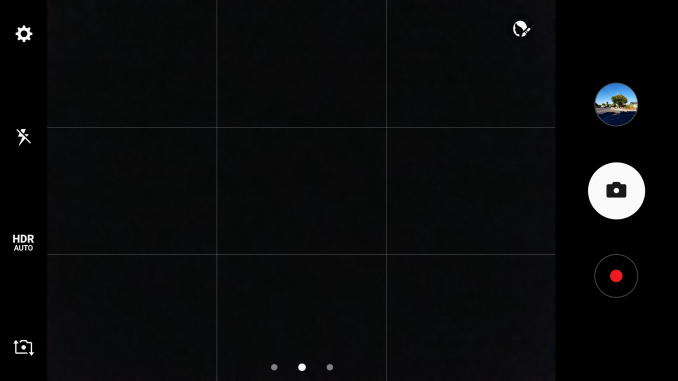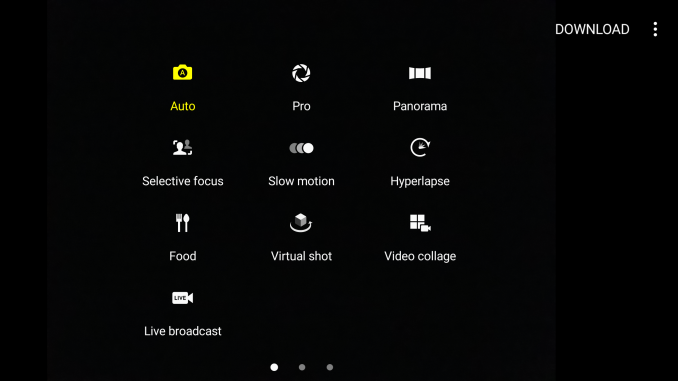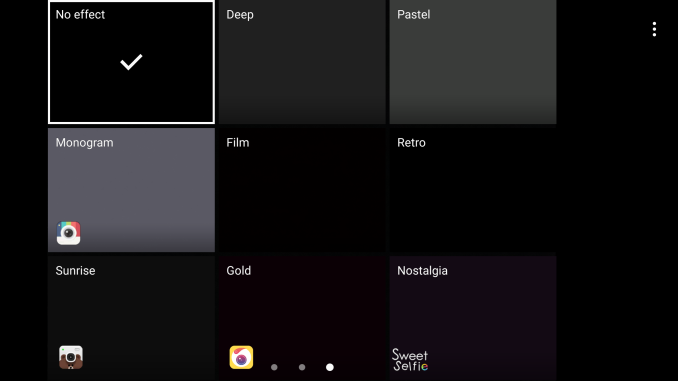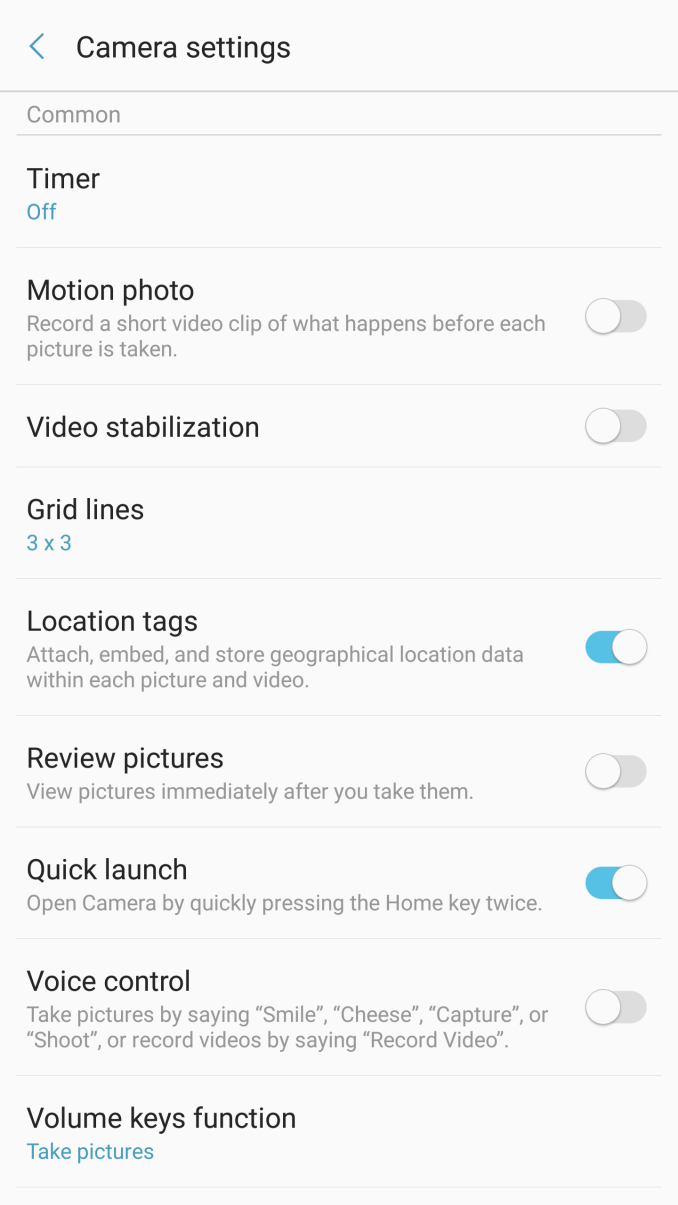The Samsung Galaxy Note7 (S820) Review
by Joshua Ho on August 16, 2016 9:00 AM ESTCamera Architecture
In general, camera has become probably the single biggest point of differentiation between smartphones at this point. As smartphones are often the only camera that most people carry on a day to day basis, the rear camera on a smartphone really cannot be a disappointment relative to the competition. While we can talk about how much a front-facing camera matters in terms of quality, it’s pretty safe to say that for photos and videos that are worth saving will be taken with the rear-facing camera.
While post-processing and a number of other factors are going to have a huge impact on the overall camera experience, the foundation that makes it possible to deliver a great camera is always going to start at the hardware.
| Samsung Galaxy Note Cameras | ||||
| Galaxy S6 Galaxy Note5 |
Galaxy S7 Galaxy Note7 |
|||
| Front Camera | 5.0MP | 5.0MP | ||
| Front Camera - Sensor | Samsung S5K4E6 (1.34 µm, 1/4") |
Samsung S5K4E6 (1.34 µm, 1/4") |
||
| Front Camera - Focal Length | 2.2mm (22mm eff) | 2.1mm (21mm eff) | ||
| Front Camera - Max Aperture | F/1.9 | F/1.7 | ||
| Rear Camera | 16MP | 12MP | ||
| Rear Camera - Sensor | Sony IMX240 Samsung S5K2P2 (1.12 µm, 1/2.6") |
Sony IMX260 Samsung S5K2L1 (1.4 µm, 1/2.6") |
||
| Rear Camera - Focal Length | 4.3mm (28mm eff) | 4.2mm (26mm eff) | ||
| Rear Camera - Max Aperture | F/1.9 | F/1.7 | ||
It’s probably not any surprise that the Galaxy Note7 has the same exact camera setup as the Galaxy S7, but in case it was ever in doubt it shouldn’t be now. Given the similar camera setup I don’t think that there’s a ton of difference to be expected between the two phones but things like software algorithms can and do change with time so it’s important to not just immediately write off the Galaxy Note7 or assume it’s immediately going to be award-winning. It’s worth reiterating here that the dual pixel system likely incurs a sensitivity penalty as in order to implement the dual pixel system each pixel must have a physical light barrier as you need a microlens and a barrier to make light from the same object converge on two separate photodiodes so the amount of light collected is inherently going to be less than no barrier and a single photodiode per pixel. I’m also curious to know whether any quantum effects appreciably change sensitivity here as if a single pixel is a 1.4 micron square then each photodiode has area similar to a 1-micron pixel. With that said we can move on to the one major change highlighted by Samsung, namely the user experience.
Camera UX
One of the major points highlighted in the launch event was that the camera application was completely redesigned. In addition to a fairly subdued icon that better fits the color palette for Android in general, the UI itself is a bit cleaner out of the box.
Right away when you open the camera app the most apparent thing is that the number of icons has been reduced. Instead of a dedicated mode button it’s now a swipe, and the same is true of the effects button. There’s also no more timer or resolution button on the screen by default, and the button to hide the various settings buttons has been eliminated entirely. It’s also worth mentioning that the button to change between cameras has been moved and a gesture to do the same thing has been added so you can simply swipe up or down to switch between cameras. Samsung also continues to shut off the camera after a few minutes automatically which is good if you’re a normal user but annoying if you’re trying to set up a shot of an ISO chart with a tripod.
Other than these changes almost nothing else really changes. There are some extra toggles like shape correction in the settings overflow and RAW output is now hidden under Picture Size for the rear camera but nothing else is really notable. I don’t really have anything else to say here that’s new, and I would refer to the Galaxy S7 Part 2 review if you are otherwise unfamiliar with Samsung’s camera application. As both perform identically as far as focus and capture speed goes subjectively we’ll temporarily forgo these results in favor of timeliness for this review.















202 Comments
View All Comments
tipoo - Tuesday, August 23, 2016 - link
Yes please. Interesting topic that is strange that smaller Chinese companies do better than some Android giants.Bombdog - Tuesday, August 16, 2016 - link
"like the iris scanner are actually useful and work well which is amazing considering how this is the first modern smartphone with an iris scanner"It's not, the Lumia 950 & 950 XL were the first.
JoshHo - Tuesday, August 16, 2016 - link
Duly noted. The review has been updated.Geranium - Tuesday, August 16, 2016 - link
Lumia 950 & 950 XL use face recognition, not iris scaning.StevoLincolnite - Wednesday, August 17, 2016 - link
Nope.The Lumia's have an infrared camera and another camera that specifically designed to take pictures of your eyes.
slyronit - Tuesday, August 23, 2016 - link
No. The Surface Pro 4 and Surface book use face recognition. Both the Lumias you mentioned use Iris scanners.supraman21 - Tuesday, August 16, 2016 - link
I was really hoping for 2 Lane storage. They have it, its available, why the hell don't they use it! Especially considering how much an effect storage performance has on overall system performance. Apparently they also have developed and have ready a new 5 Axis image stabilization system for phones. Wtf are they doing?phoenix_rizzen - Tuesday, August 16, 2016 - link
Leaving features on the table for future phones, to get people [back] onto the upgrade treadmill?WPX00 - Tuesday, August 16, 2016 - link
I actually get the reasoning behind the un-swipeable tabs in SMS and Contacts: for years, Samsung has kept an unnecessary feature in these apps that is swipe to call/message, so a horizontal swipe has already been taken by that function. It's a ridiculous feature I have never used or seen anyone use, and even after 3 years of using a Samsung I still swipe in those apps sometimes and call someone instead of moving tabs.snajk138 - Wednesday, August 24, 2016 - link
I actually use that swipe all the time. In my opinion it's a great time saving feature.